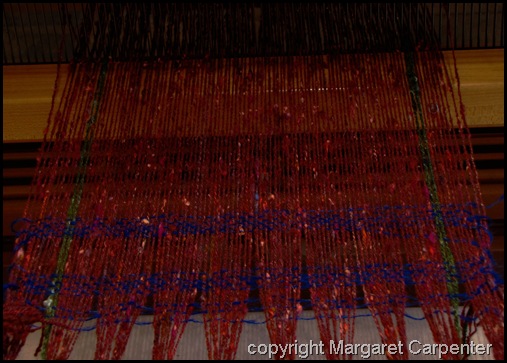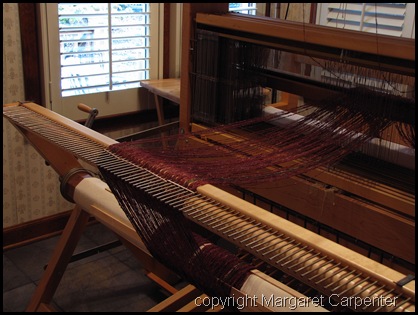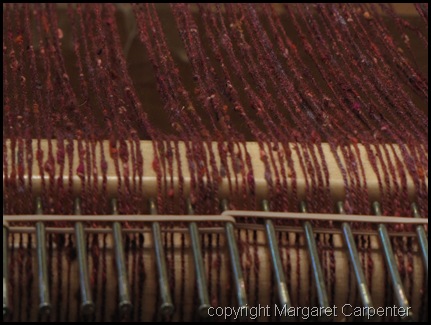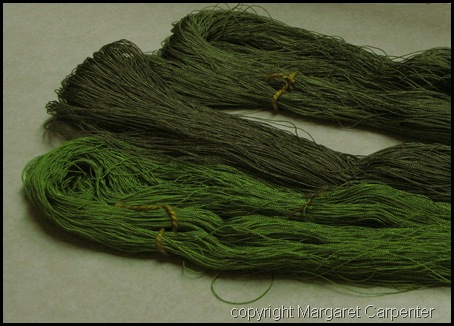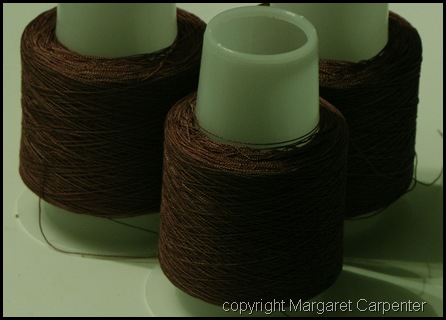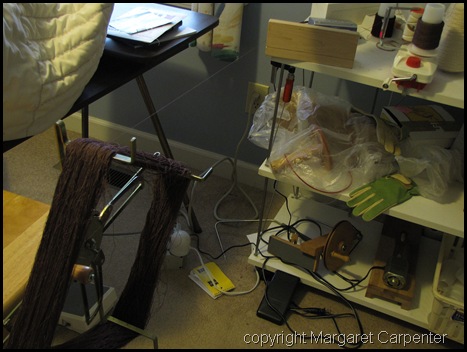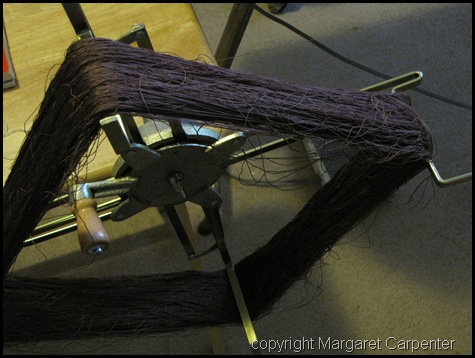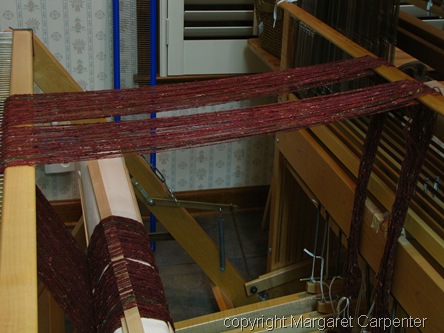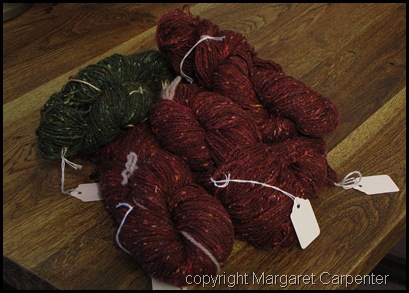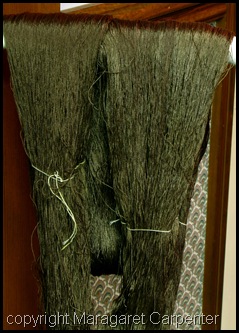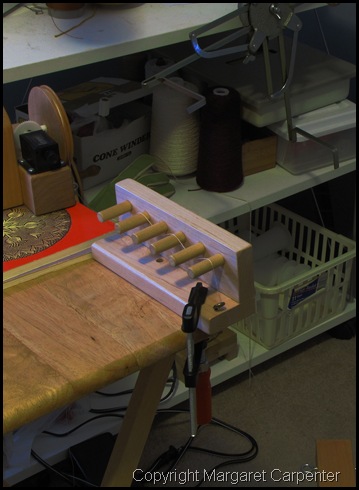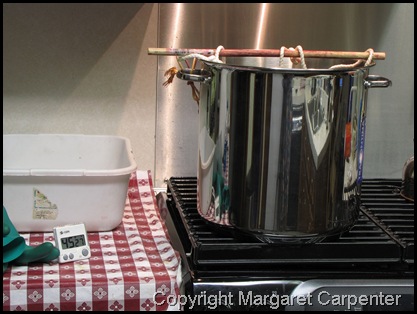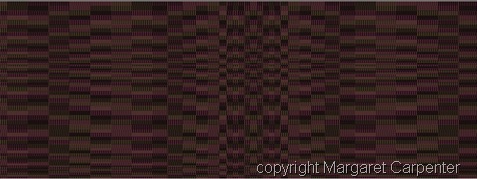Posted by Peg in South Carolina
I checked Osterkamp’s extensive discussion of figuring out sett in her book, Winding a Warp and Using a Paddle. Usually I go the yards-per-pound route. This time, however, I decided I wasn’t going to fiddle with that. Instead I decided to work with the wraps per inch*.
My measurements of the wpi came in at 16. I’m never sure of the accuracy of these measurements. The finer the yarn gets, the more problematic it can be. But 16, accurate or inaccurate, is what is is going to be.
YARN WEIGHT PER POUND VERSUS WRAPS PER INCH
Yarn weight per-pound is much more accurate than working with wraps per inch. Working with 60/2 silk forces me into using yards-per-pound. However, that figure is already provided by the manufacturer. For me to work that out on my own, I would have to use the McMorran Balance**. But I’m not so sure of my ability to be accurate with that either.
16 wraps per inch it is.
CALCULATING SETT: STEP ONE
The next step is to multiply 16 by 0.67 (or 2/3) to get the maximum sett for twill. The answer to that calculation is 10.72. That, however, would be the maximum sett for twill. I want a softer fabric than that.
STEP TWO: CORRECTING FOR KIND OF FABRIC
To get a sett for a softer fabric I multiplied 6.9 by 0.65, the number that Osterkamp suggests for woolen. That calculation gave me a sett of 6.9. So the sett I would then use should be 7 epi.
STEP THREE: MAKE A CONSIDERED JUDGMENT
However, the last handspun I wove, with identical grist, was sett at 8 epi for twill. And this was decided only after enormous amounts of time spent thinking and worrying. I still have the piece so I checked it. That sett was exactly right. I will use 8 epi as my sett for this piece.
There is another reason I prefer a sett of 8 epi over one of 7. At 8-epi I can sley an 8-dent reed with one end per dent, instead of using a 5- or 6-dent reed with varying numbers of 1 and 2 ends in each dent. I worry about possible warp streaks when I have to mix the number of ends in a dent.
*To learn how to measure wraps per inch, go to this illustrated explanation: http://www.heartstringsfiberarts.com/wpi.shtm
**To learn how to use a McMorran Yarn Balance, go to this illustrated explanation: http://www.allfiberarts.com/library/aa00/aa022800.htm
Related Post: Thoughts on Designing
"Determining Sett for Handspun Scarf” was written by Margaret Carpenter for Talking about Weaving and was originally posted on November 10, 2009. ©2009 Margaret Carpenter aka Peg in South Carolina.
